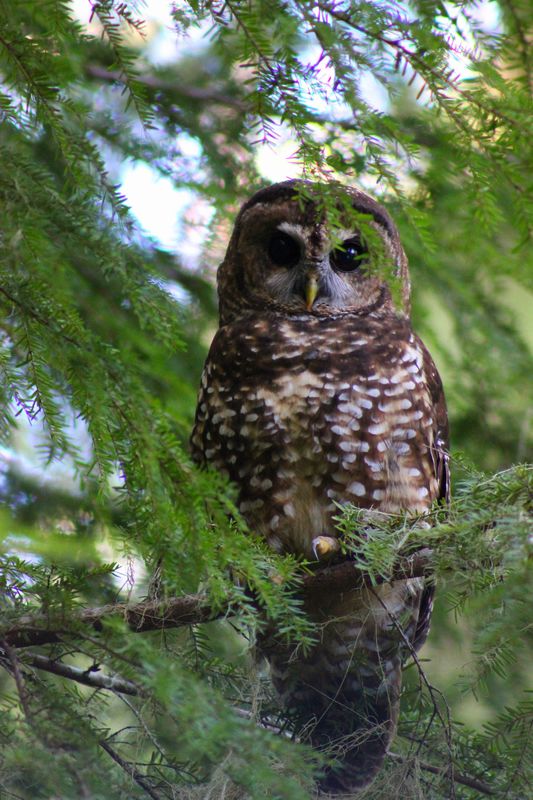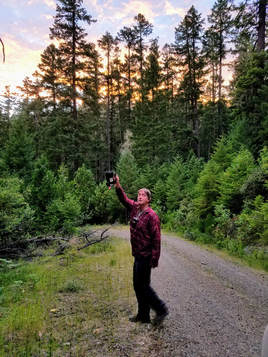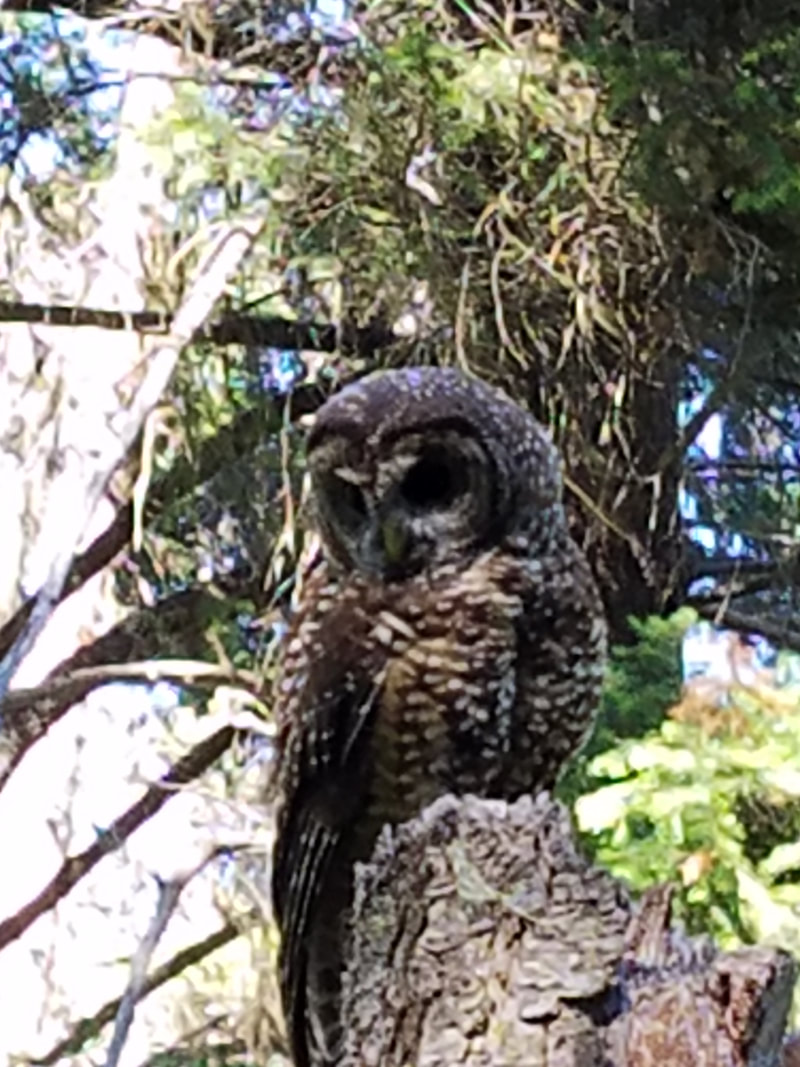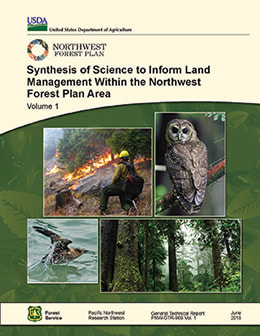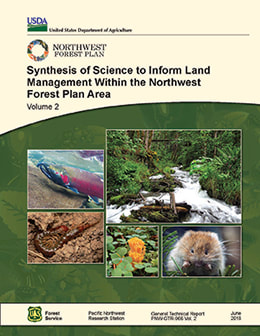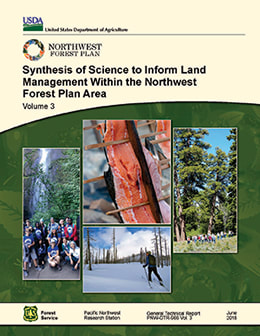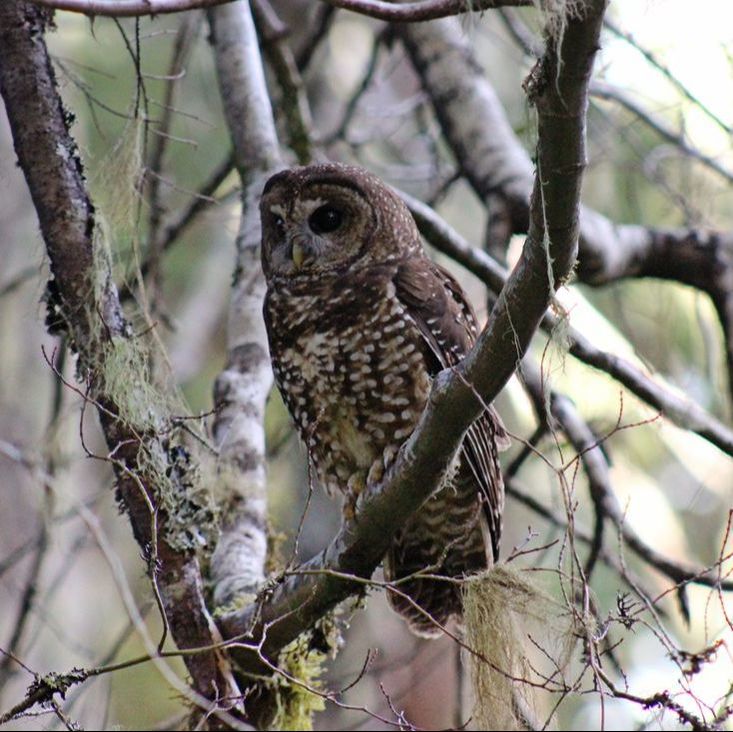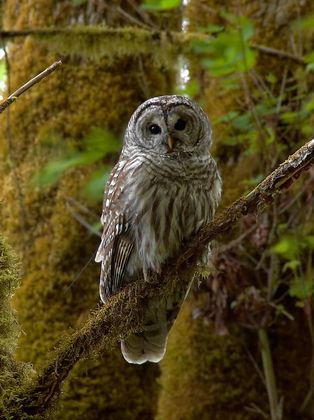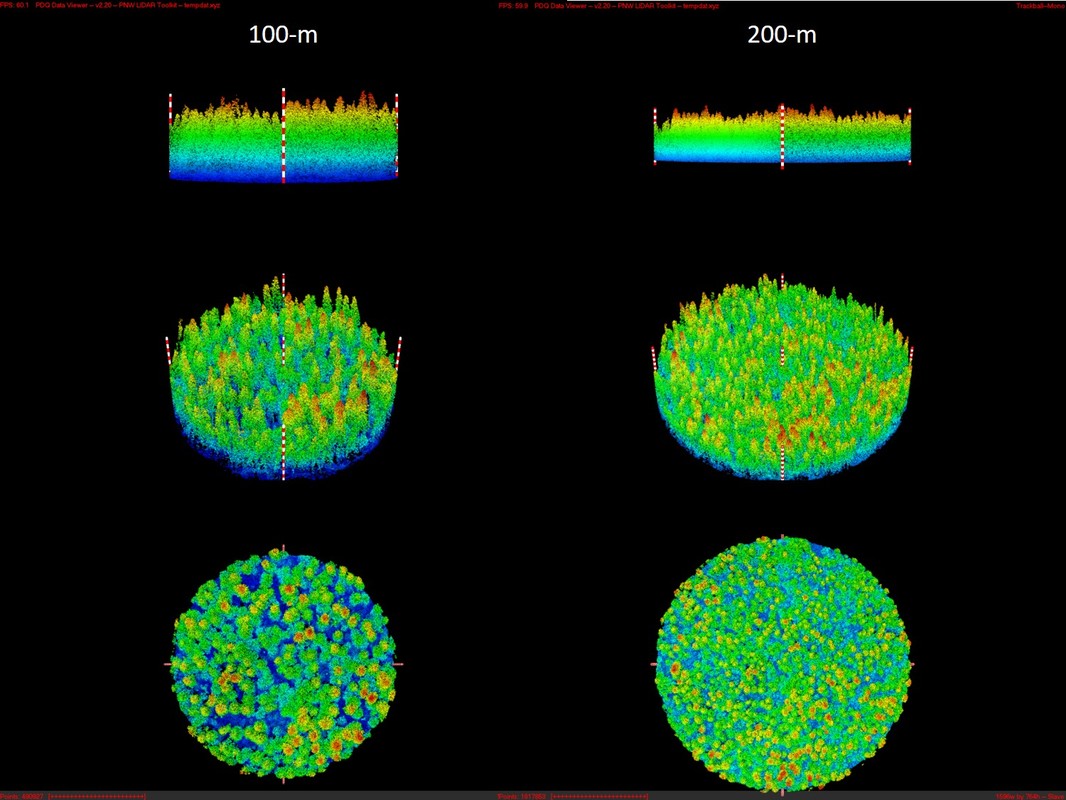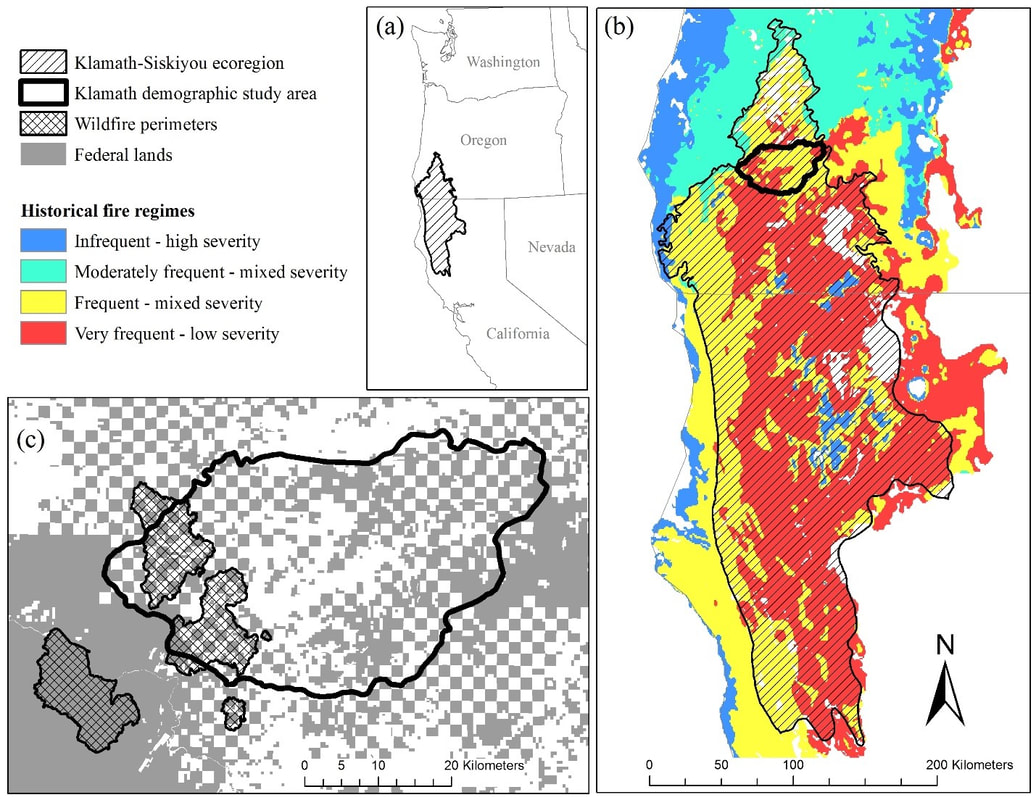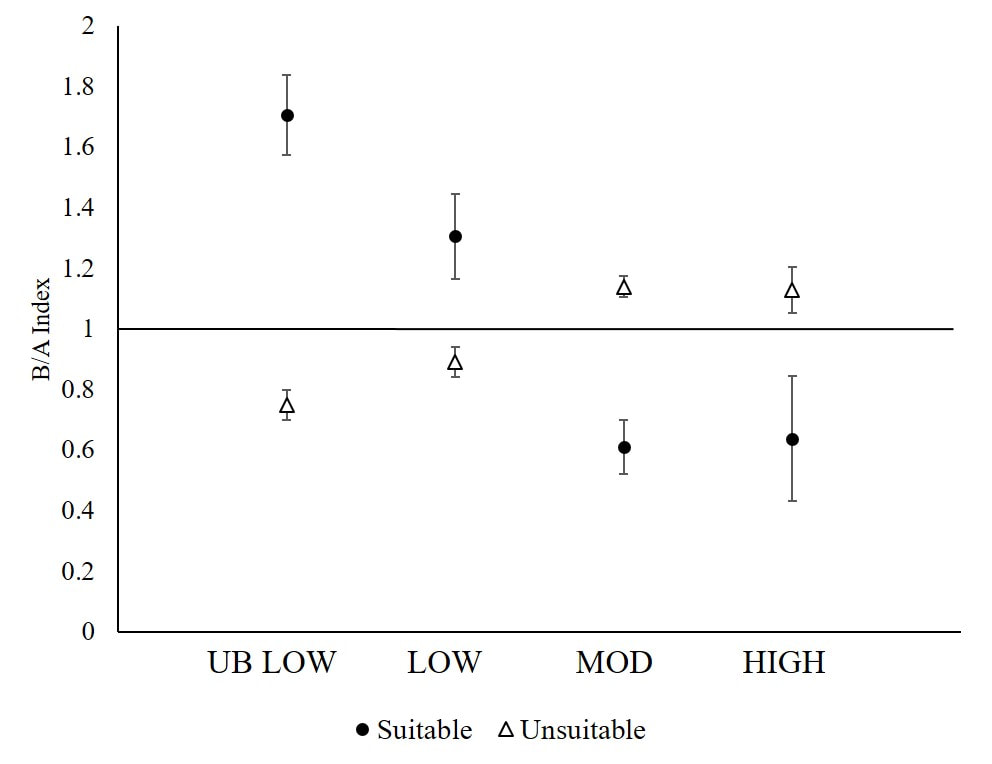Population demography Monitoring Program
|
We conduct long-term monitoring of spotted owl populations (Strix occidentalis caurina) on the Olympic Peninsula and Cle Elum study areas in WA, and in OR we conduct this work on Oregon Coast Range, Tyee, and Klamath study areas. The overarching purpose of this long-term research is to understand the effectiveness of federal forest management, especially the Northwest Forest Plan, for maintaining and restoring conditions necessary to support viable populations of spotted owls on federally-administered lands. Through this work we track status and trends of spotted owl populations primarily by collecting data to quantify territorial occupancy, survival, reproductive success, and annual rate of population change. We quantify the effects of trends in the amount and distribution of suitable forest and other components of spotted owl habitat such as presence of barred owls and prey species.
|
synthesis of spotted owl research under Northwest forest plan
|
The U.S. Forest Service Pacific Northwest and Pacific Southwest Research Stations developed a synthesis of science relevant to outcomes under the Northwest Forest Plan. The science synthesis was published in 2018 and is being used to to inform the revision of forest plans for 19 national forests within the Northwest Forest Plan area. Dr. Lesmeister led the chapter on northern spotted owls, which synthesized research on populations, habitat, threats, and provided a prognosis for future spotted owl populations. In short, what we found was that spotted owl populations are in steep decline and face many threats including negative effects of past and current loss of suitable forest caused by timber harvest and wildfire. Additionally, several lines of evidence have documented the negative impacts of barred owls (Strix varia) on spotted owl populations. Regarding the effectiveness of the Northwest Forest Plan and spotted owls, we concluded that the plan has been critical for spotted owls because populations certainly would have declined more rapidly had it not been for protections afforded under the plan. We also suggest that the plan by itself is not sufficient to reverse trends in populations, thus additional conservation and management measures are likely needed to improve population status of northern spotted owls. See publications tab for links to papers published from this effort.
|
3-dimensional partioning between spotted owls and barred owls
|
Dr. Jenkins is the lead author on a paper providing the first evidence of fine-scale spatial partitioning between spotted owls and barred owls based on structural forest properties. We examined resource selection by sympatric northern spotted owls and barred owls in western Oregon to quantify the relative importance of canopy heterogeneity, vertical complexity of forest, and abiotic features and identified potential differences that may facilitate long-term coexistence. Our results suggested that while both species used tall canopy areas more often than low canopy areas, spotted owls were more commonly found in areas with lower tree cover, more developed understory, and steeper slopes. Published paper coming soon!
|
activity center selection
|
Dense forest canopies are often reported as an important habitat attribute for spotted owls, though the means of measuring forest canopy and interpreting species requirements vary across studies. Stan Sovern is the lead author on a paper where we demonstrated the effectiveness of lidar data to accurately measure forest canopies over large areas, and assist in mapping spotted owl habitat, especially critically important activity centers that are often used for nesting. We used lidar measurements of canopy cover, canopy surface heterogeneity, and upper canopy surface connectivity. Spotted owls selected activity centers with more canopy cover and higher heterogeneity of the canopy surface within 100 m than was available within their territories. Published paper coming soon!
|
